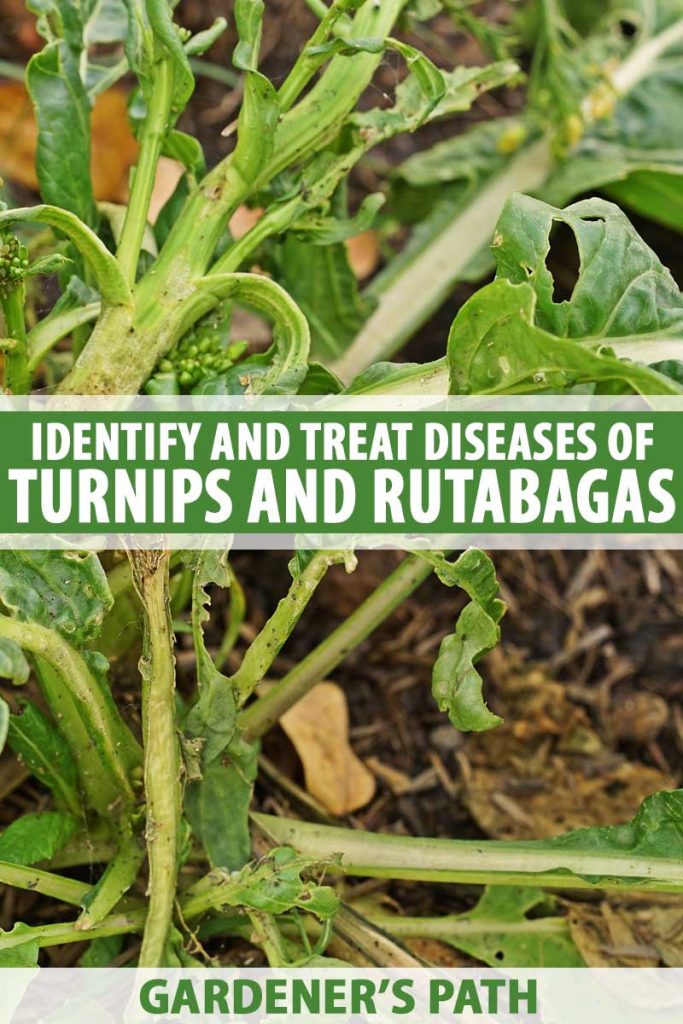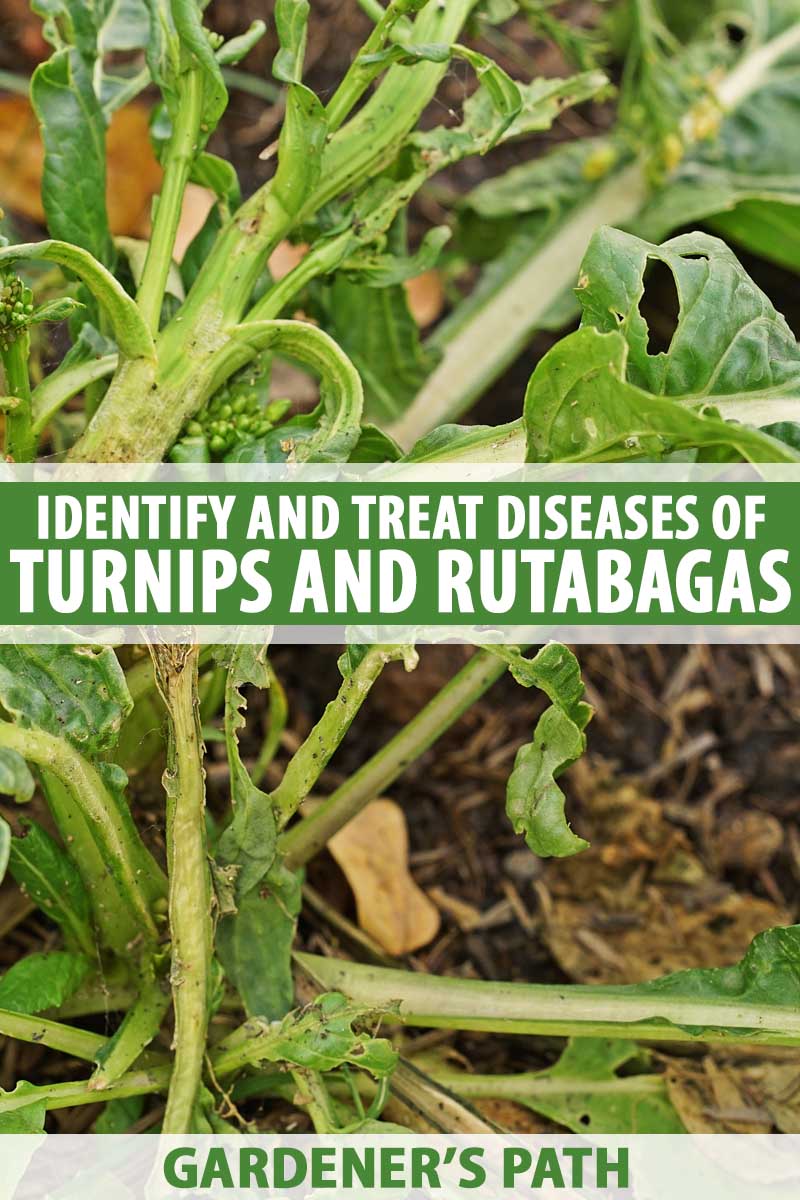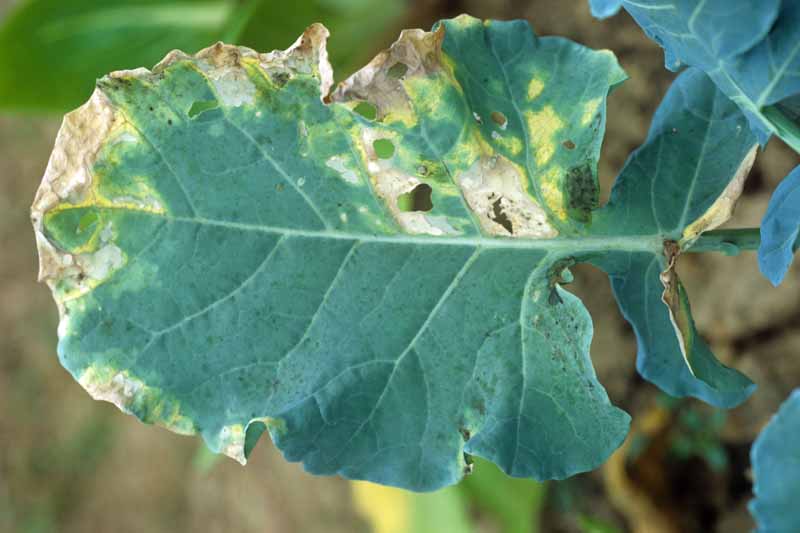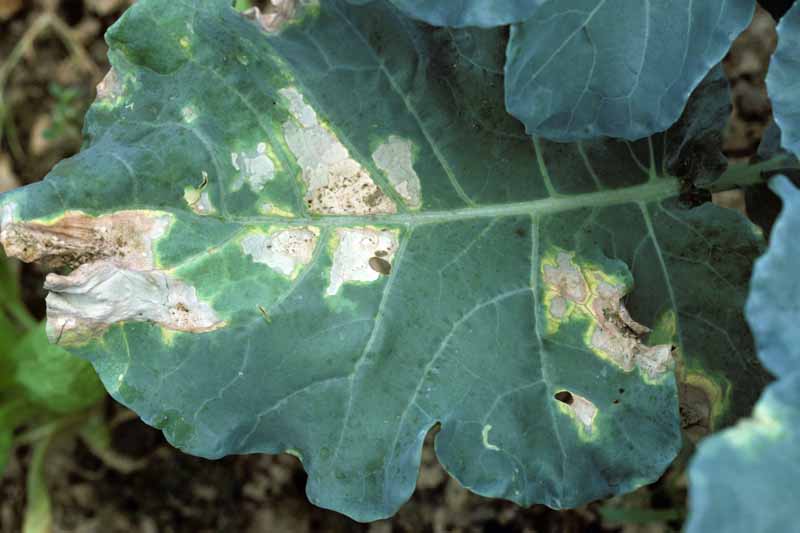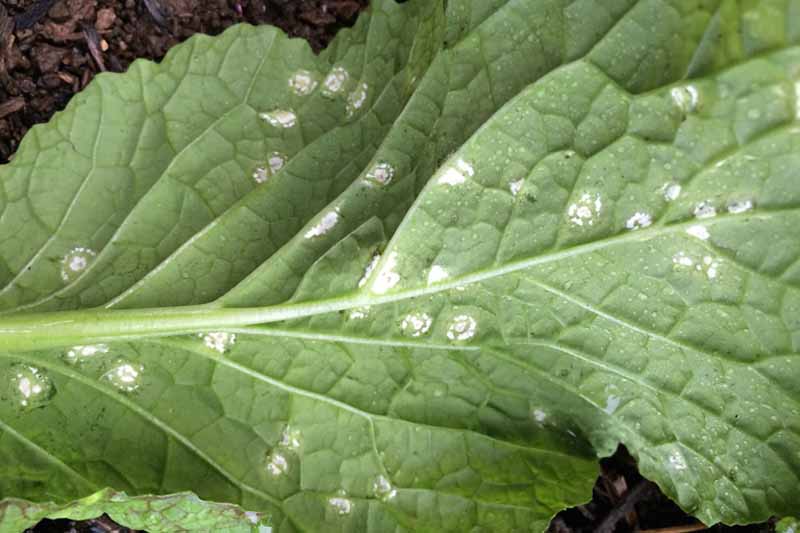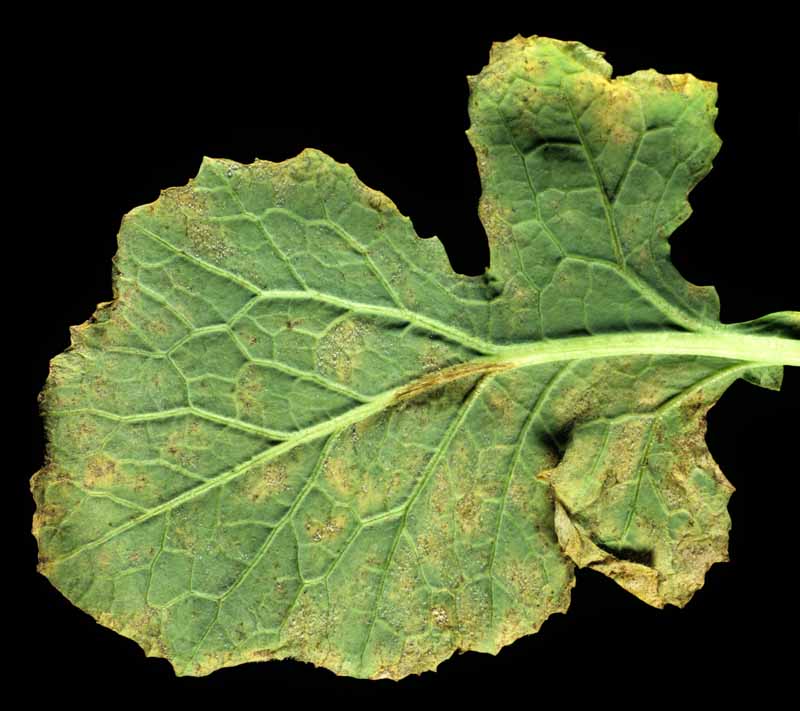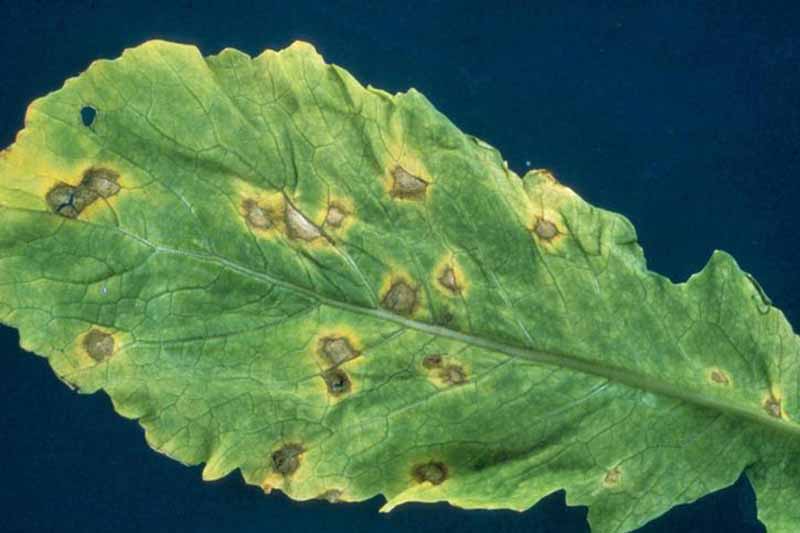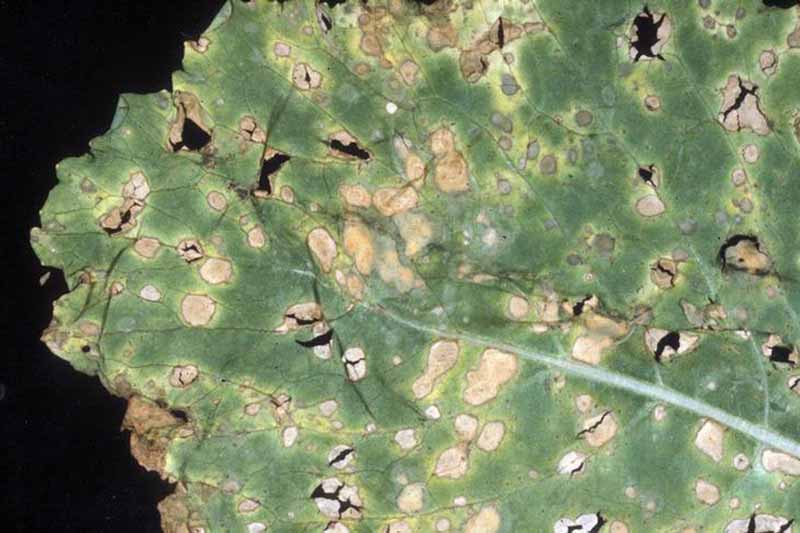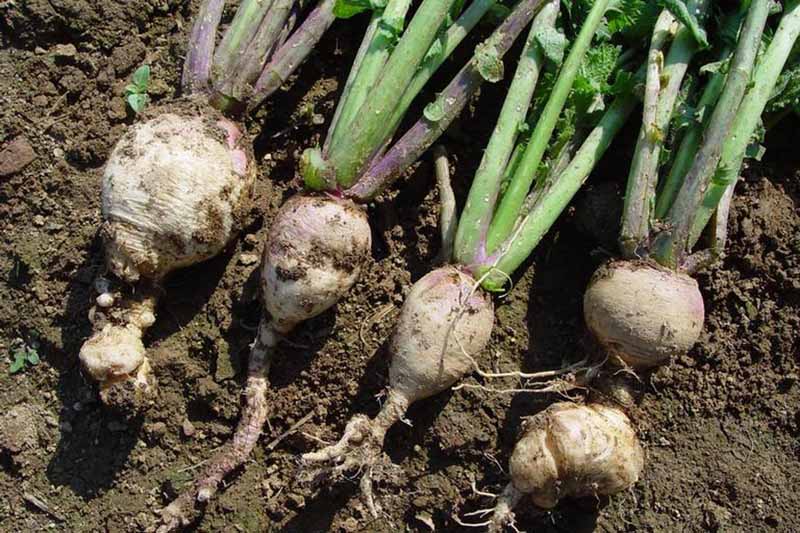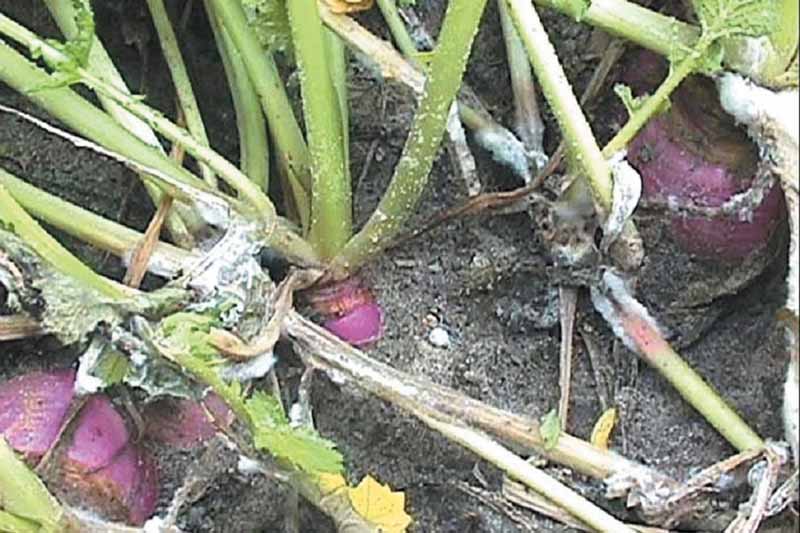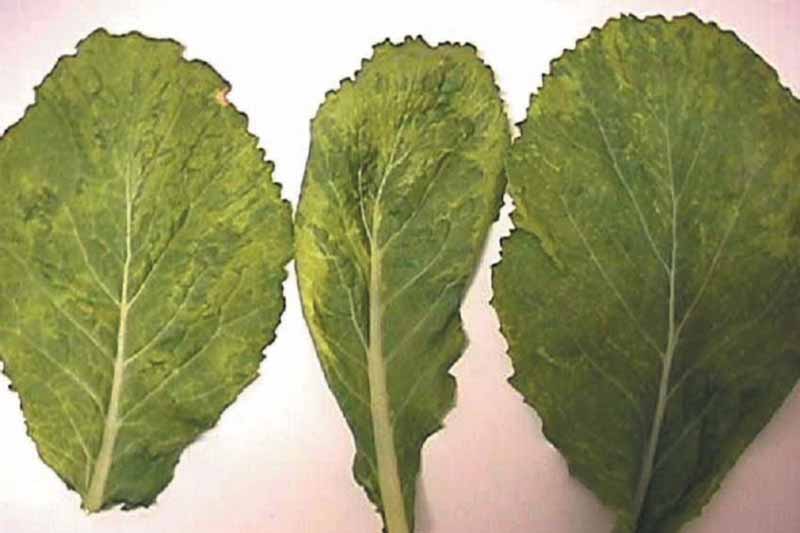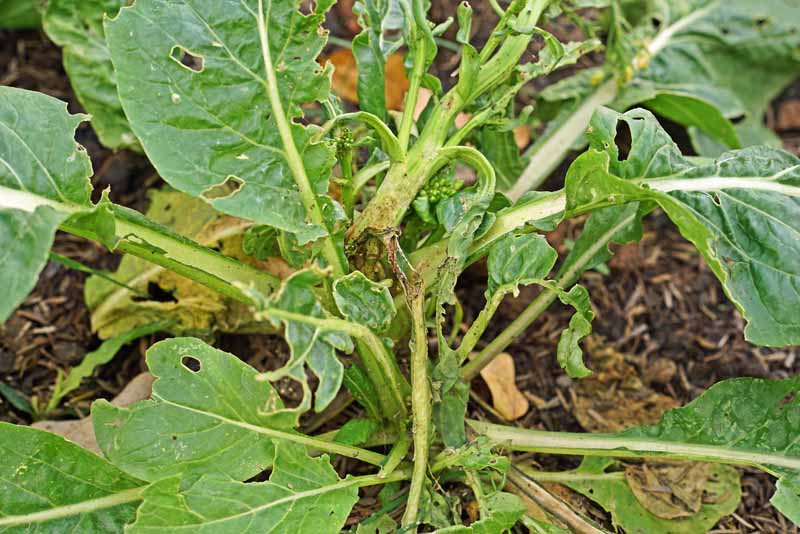Many of these pathogens affect the leaves of the plants and ruin the ability to eat or sell the greens. Others damage the turnip or rutabaga roots. We link to vendors to help you find relevant products. If you buy from one of our links, we may earn a commission.
Bacterial Diseases
A number of bacterial infections can infect turnips and rutabagas. Starting out with clean seed can help to limit these infections. If you cannot obtain disease-resistant seeds, you can treat them with 122°F water to kill any seed-borne pathogens. In addition, these bacteria thrive in moist conditions, so avoiding overhead irrigation and not working among the plants while they are wet will help to keep any disease that’s present from spreading throughout the crop. It is important to purge wild crucifer weeds that can often harbor these diseases – like wild radish and shepherd’s purse – to help keep any destructive bacteria contained and prevent potential spread. As its name indicates, you can end up with a black, rotten plant if the organism is not contained. If your plants do develop a bacterial infection, spraying with copper hydroxide (Kocide 3000) might help to keep it from spreading further.
Black Rot
Black rot is one of the most damaging bacterial pathogens that can infect turnips and rutabagas. Caused by Xanthomonas campestris pv. campestris, this organism can destroy the leaves and enter the plant’s vascular system, causing systemic disease throughout the plant and eventually killing it. Starting with clean seed is key to avoiding this disease, and you can buy seed that is certified to be free of black rot. This disease is particularly problematic because your plants can be infected for as long as 14 days before they show any symptoms. By this time, the disease may have already spread throughout your whole crop. The first symptom of note is usually yellowing of the lower leaves. Mature leaves will often have V-shaped lesions on their edges. The veins on the plant will eventually turn black. Preventing this bacterium from becoming established is the best way to control black rot. Read more about identifying and controlling black rot here.
Bacterial Leaf Spot
In addition to black rot, two other types of bacteria may cause leaf spots on turnips and rutabagas. One is a bacterium that is closely related to black rot – X. campestris pv. amoraciae (Xca) – and the other is Pseudomonas syringae pv. maculicola (Psm). Both types of bacteria cause small, water-soaked lesions that can spread and join together to destroy the greens. Both types of infections cause yellow halos, but you can tell them apart because Xca produces much more noticeable halos. These are serious infections that are difficult to control, and they can destroy your crop. Psm infects plants at cool temperatures, typically in the early spring and fall. In contrast, Xca infections occur at times with warmer temperatures. This is usually a problem in the summer. Similarly to black rot, preventing these bacteria from becoming established is the key to avoiding bacterial leaf spot disease. Read more about indentifying and controlling bacterial leaf spot here.
Oomycete Diseases
In case you have not heard of oomycetes, they are a group of organisms that were once considered fungi but are now classified as water molds. However, they act like fungi! These organisms do not kill their hosts, but they can cause significant damage to the leaves. As with the bacterial diseases described above, preventing the initial infection is the best way to control oomycete diseases. As indicated by their name, water molds like wet conditions. Purging cruciferous weeds and minimizing overhead irrigation are also ways to control these diseases.
White Rust
This pathogen – Albugo candida – produces yellow spots on the upper surfaces of the leaves, and white pustules that look like blisters on the bottom of the leaves. White rust is usually not a serious disease. However, sometimes the disease can create a systemic infection, and spread throughout the entire plant. No fungicides are registered to control white rust. Read more about identifying and treating white rust here.
Downy Mildew
In contrast, downy mildew caused by Peronspora parasitica can be a serious disease for turnips and rutabagas, especially in cool conditions such as those present in the fall. This organism can kill young seedlings and seriously affect the greens. Severe infections can also spread from the crown into the root and cause cracking. Your plants can have a low-level infection that you are unaware of that can suddenly spread throughout the rows when conditions become favorable, such as when there is a lot of moisture present. The symptoms include yellow patches on the upper leaves. If the weather is right, the underside of the leaves will appear to have patches or a covering of white mildew. If you expect that this pathogen will be a problem, you can preemptively treat with copper hydroxide (Kocide) or fungicides.
Fungal Diseases
A number of fungi may cause disease on the leaves or the roots of turnips and rutabagas.
Alternaria Leaf Spot
Two species of the fungus Alternaria, A. brassicicola and A. brassicae, can cause a cosmetic disease on turnip and rutabaga leaves. While this does not impact the roots, it can render the greens difficult to sell – both at the farmers market and on your dinner table – and visually unappealing. This disease can be diagnosed fairly easily. Spots ranging from yellow to black form on the leaves, and then develop concentric rings like a target. The disease can spread to the seed pods, stems, petioles, and flowers. You can often prevent this disease from afflicting your crop by planting disease-free seed, controlling cruciferous weeds, and doing your best to keep your plants dry. If your turnip or rutabaga plants do contract this infection, you can use microbes (biofungicides) to help control it. Sprays with copper hydroxide (Kocide) or synthetic fungicides are other options to control this disease. Read more about identifying and treating Alternaria Leaf Spot.
White Spot
The pathogen Cercosporella brassicae is another fungus that can infect turnip and rutabaga leaves. The lesions that it causes range from gray to brown, with margins that are slightly darkened. The fungus can infect seed, or be spread from cruciferous plants like volunteers or weeds. High humidity and cool temperatures help to facilitate the spread of this type of infection. Minimizing wetness on the plants and controlling cruciferous weeds will help to control white spot. If you think the conditions are favorable for its spread, you can spray protective fungicides on a weekly basis. Read more about controlling white spot here.
Anthracnose
The fungus Colletotrichum higginsianum causes small, circular, dry lesions on the leaves, and severe infections can kill them. Gray to tan lesions can also form on the roots. The lesions also predispose infected turnips and rutabagas to bacterial soft rot. Infected seed can be a source of this fungus, but it can also spread from fallen leaves and some types of wild crucifer weeds such as wild radish, shepherd’s purse, wild mustard, and pepper grasses. The disease typically occurs during moist, warm weather, and it can be controlled with fungicides.
Clubroot
The particularly nasty fungus Plasmodiophora brassicae infects the roots of turnips and rutabagas, leaving them full of galls and highly deformed. The damage may appear to have been caused by nematodes, and can be difficult to diagnose. Unfortunately, this fungus can survive in the soil for more than 10 years and is next to impossible to eliminate. Since control is not an option, prevention is your best bet. Only plant certified disease-free seed, and be careful about spreading the fungus from infected plants.
White Mold
Given the extremely wide host range of Sclerotinia sclerotiorum, it is no surprise that white mold may afflict turnips and rutabagas. This disease – also referred to as Sclerotinia timber rot – results in white-gray lesions on the stems, and gray lesions on the leaves. High humidity and cool temperatures aid the growth of white mold. As with most of the other ailments described here, controlling weeds will help to prevent infection. Rotate your crops to plant non-cruciferous vegetables for at least three years after growing them in your fields, gardens, or raised beds. Foliar fungicides can help to control white mold.
Viral Diseases
Turnip Mosaic
Both cabbage and peach aphids spread turnip mosaic virus, which can severely affect plants. This disease can cause dead areas and a diagnostic pattern of yellow and green mosaics on the leaves. The older leaves may turn yellow, and plant growth will be stunted. Turnip mosaic virus can greatly reduce yields. The best way to control this disease is to control the aphids. One way to do this is to use reflective mulches. If necessary, you can also use insecticides for this purpose. Beneficial insects may offer a helping hand (er, leg? mandible?) as well. Read more about controlling this viral infection here.
A Plethora of Diseases Attack Turnips and Rutabagas
Numerous bacterial and fungal diseases may attack turnips and rutabagas. In addition, the water molds white rust and downy mildew are potential pathogens, and turnip mosaic viruses may severely affect the yields.
But this isn’t a reason to avoid growing these delicious root crops! Knowing the symptoms of infection by these pathogens can help you to diagnose these ailments, and to determine what control measures are appropriate. Planting only certified disease-free seeds can prevent many of these diseases from becoming introduced or established, although volunteer plants and cruciferous weeds can harbor reservoirs of many of these pathogens. Have you found these crops to be prone to disease in your own garden? Share your questions and experiences in the comments below! And if you need more information on treating brassica pests, disease, or disorders, one of these guides might help:
What’s Eating My Turnips? How to Eradicate Turnip and Rutabaga Pests How to Plant and Grow Turnips How to Grow Rutabagas: A Cool-Weather Crop Perfect for Fall
© Ask the Experts, LLC. ALL RIGHTS RESERVED. See our TOS for more details. Uncredited photos: Shutterstock.
